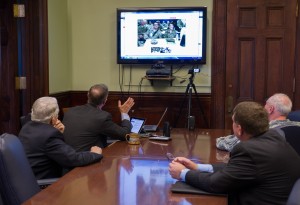Technology has changed the way that businesses approach client relationship management, productivity and efficiency. Virtual meetings are just one facet of an ever-evolving landscape of modern convenience. Yet, as much as they reduce travel costs and time spent away from the office, they often have their own set of issues. That’s why it’s important for meeting leaders to learn the most effective way to manage virtual meetings to maximize their benefit for all parties involved. Read below for some of the problems faced by virtual meeting leaders and ways to avoid them.
Common issues that occur with virtual meetings include:
- Not starting on time because of “technical difficulties.”
- Firewalls and other blockages preventing full participation from key members.
- Lack of engagement from users who may use the time to multi-task rather than pay full attention.
- Unresolved conflict because non-verbal signals of disagreement or dissent are not visible to the presenter or leader.
- Lack of purpose/preparation.
- Distractions due to technology.

For the majority of these issues, lack of skill or experience is the common culprit. People often underestimate the skills needed to guide virtual meetings, expecting instead that less will be required of them thanks to the magic of technology.
The truth is that virtual meetings typically require even more planning to be highly effective in order to drive engagement and commitment. Training meeting leaders to navigate your virtual meetings through even the trickiest of challenges is widely recommended for the best results.
Through our innovative virtual training course The Effective Facilitator: Virtual Edition, we can give you the skills you need for online group facilitation, leadership, team building, presentation, consulting skills and more. Contact us to see how we can help you improve your virtual facilitation skills.

